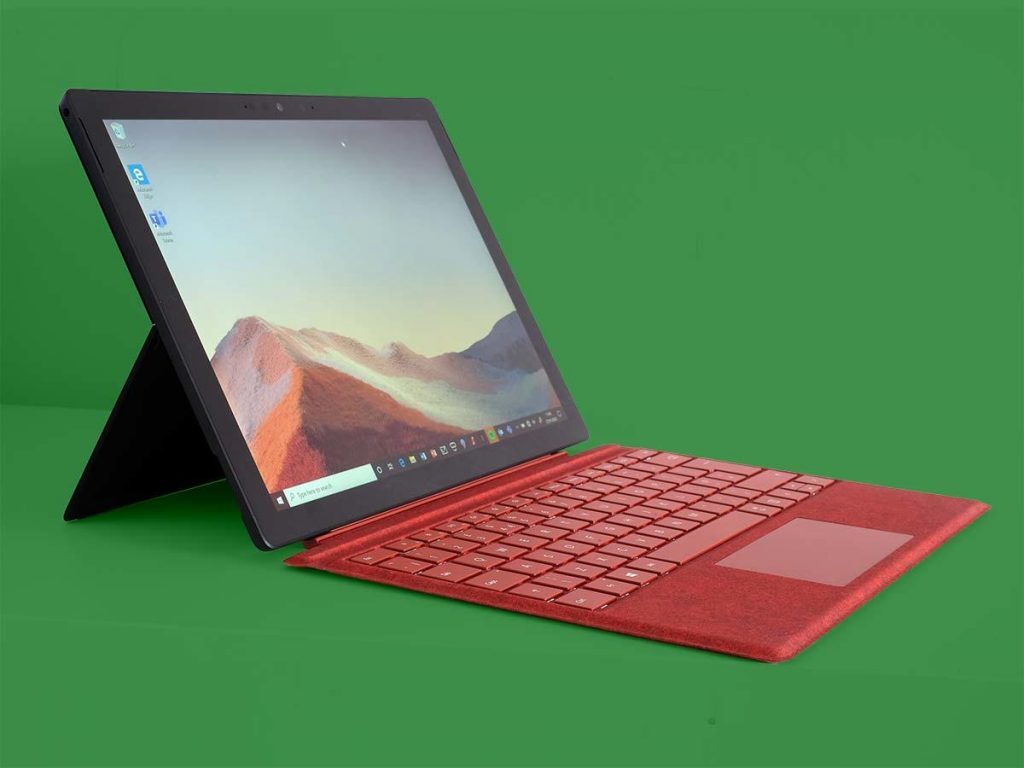It used to be that the most exciting (and expensive) tablet you could buy in South Africa was Apple’s iPad Pro series. That’s mostly changed, as of yesterday, as Microsoft has announced that it’ll have Surface hardware in stores before month’s end.
We’ve been waiting for a long time to lay hands on Microsoft’s Surface kit so now’s a great time to take a first look at the Surface Pro 7, one of the two devices landing on our shores this July. The other, of course, being the Surface Laptop 3, which we’ll get to soon enough.
Design: What exactly is this thing?
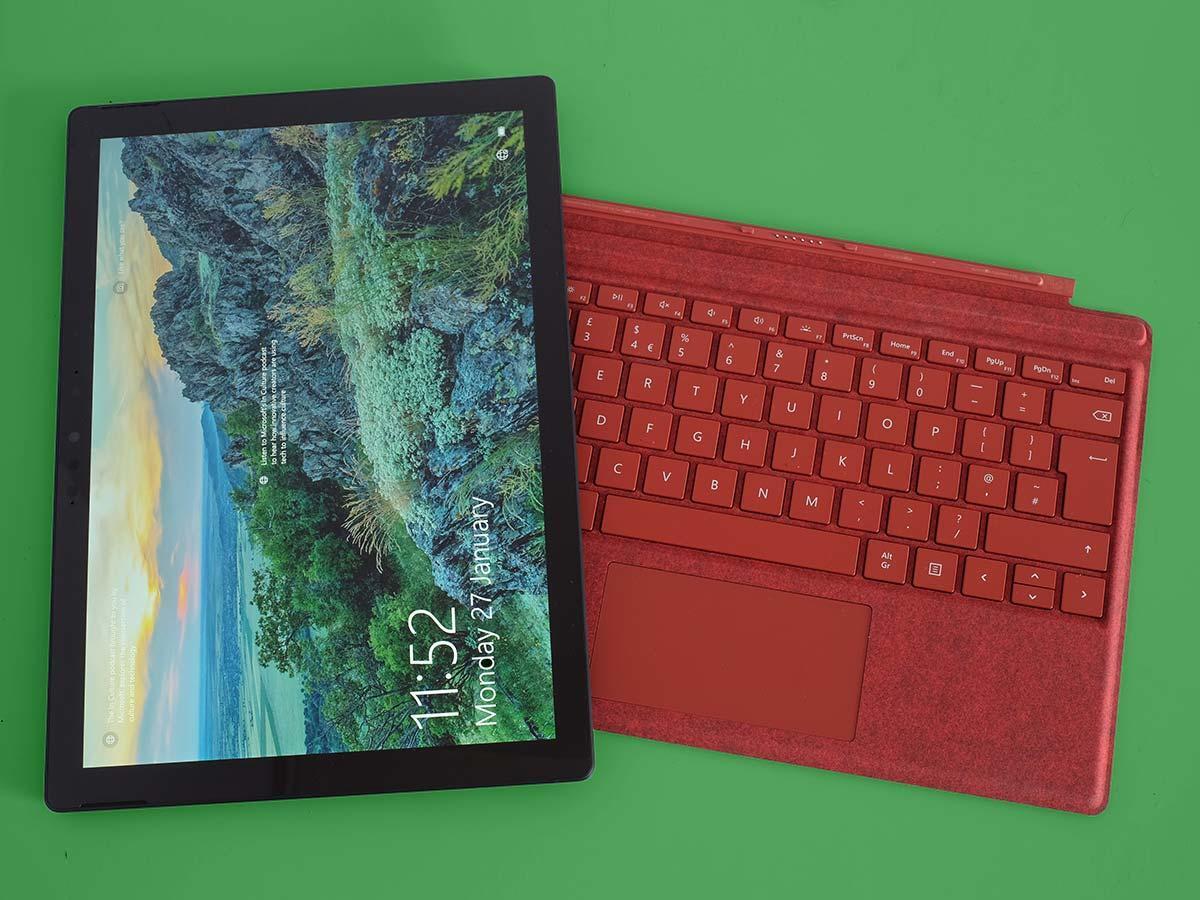 Microsoft’ Surface Pro range come across as tablets, because that’s what they are. Except they’re not. Imagine sticking an entire Windows laptop into a tablet format. And not the sort of spec that just barely meets the requirements for Windows 10 — the real deal (more on that in a bit).
Microsoft’ Surface Pro range come across as tablets, because that’s what they are. Except they’re not. Imagine sticking an entire Windows laptop into a tablet format. And not the sort of spec that just barely meets the requirements for Windows 10 — the real deal (more on that in a bit).
Long story short, there’s the Surface Pro itself — a hardware-stuffed 12.3-inch IPS LCD touchscreen (2,736 x 1,824) with a magnesium alloy chassis that has to be felt to be believed. But it’s not really as useful as you’d like it to be without the associated Type Cover.
Which is basically a fancy, Alcantara-covered case with an entire keyboard in it. The cover feels good (which is why they use it in luxury vehicles) but the Type Cover also elevates the Surface Pro 7 from ‘overpowered tablet you probably won’t utilise fully’ to ‘throw away your PC, this thing is all you need’. It’s that useful.
Magnets: How do they work?
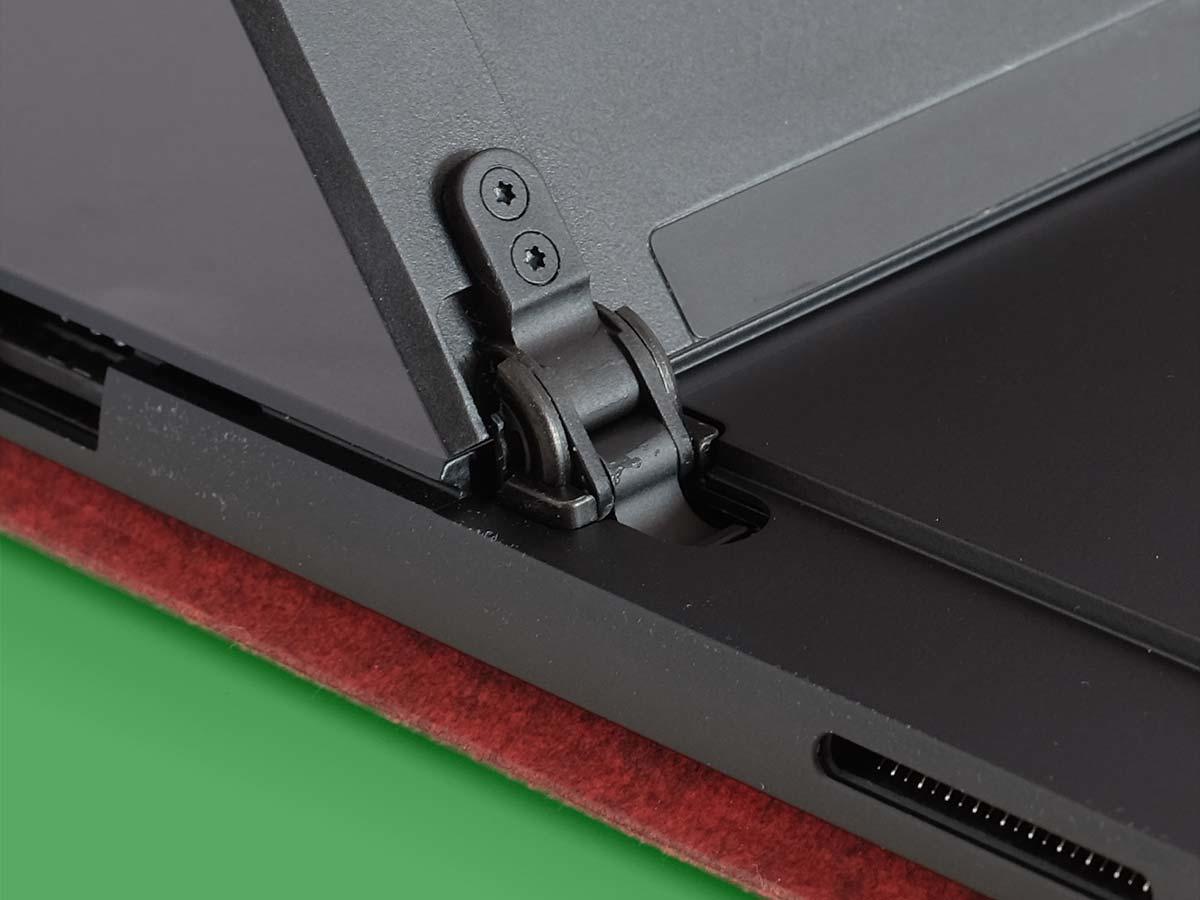 The Type Cover and the Surface Pro 7 are held together by magnets. Two sets, in fact, working in tandem to a) keep the keyboard attached to the screen and b) tilt the keyboard at an angle that allows more comfortable typing.
The Type Cover and the Surface Pro 7 are held together by magnets. Two sets, in fact, working in tandem to a) keep the keyboard attached to the screen and b) tilt the keyboard at an angle that allows more comfortable typing.
There’s also a metal kickstand, used to prop up the Surface Pro 7 so that you can actually use it like a laptop computer. The angle is very forgiving, so you can choose your orientation and mostly have it do what you want, but you’re going to want to use it on a desk rather than an actual lap. It’s less safe to use than a laptop across the board but it’ll set up just about anywhere there’s enough space (as long as you keep it on the desk — that’s on you).
Mostly, though, it’ll feel as good as an actual laptop. Even the trackpad feels good.
Looking inward
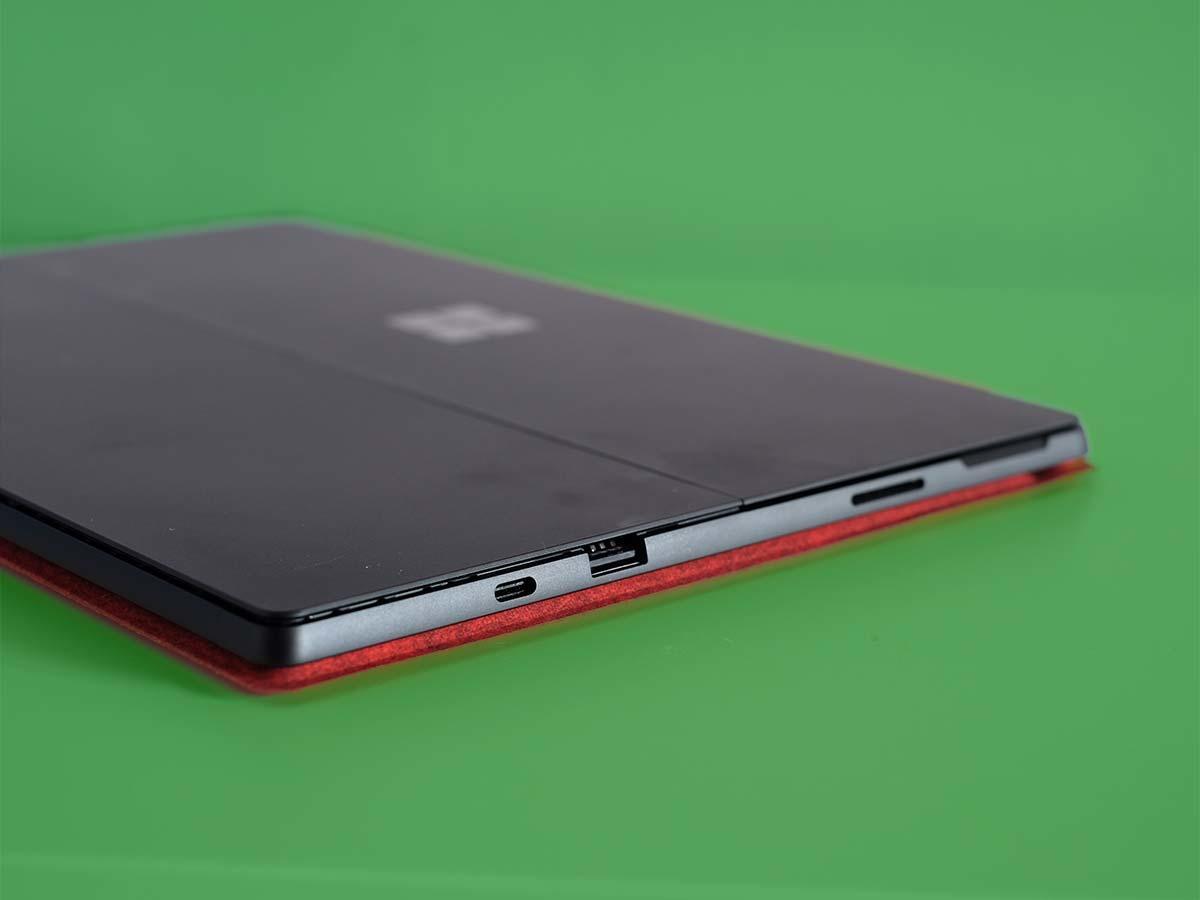 Which is great because the Surface Pro 7 does have actual laptop specs. It’s toting Intel’s 10th generation Core iX processors, supports up to Intel’s Iris Plus graphics (for the Core i5 and Core i7 models) and features between 8GB and 16GB of RAM. That’s a lot of power to stuff inside something this skinny, a move that should prove its worth when you’re multitasking on your coffee table on a short deadline. Just us? Okay then.
Which is great because the Surface Pro 7 does have actual laptop specs. It’s toting Intel’s 10th generation Core iX processors, supports up to Intel’s Iris Plus graphics (for the Core i5 and Core i7 models) and features between 8GB and 16GB of RAM. That’s a lot of power to stuff inside something this skinny, a move that should prove its worth when you’re multitasking on your coffee table on a short deadline. Just us? Okay then.
The Surface Pro 7 rivals full-sized notebooks like the Dell XPS for power — to get any faster you’ll need a dedicated GPU in your machine and that’s… something the Pro 7 doesn’t have space for. Which is okay.
You’ll find there are enough ports to be getting on with as well — some traditional, some a little newer. Like the USB-C port, for those of you (most of you) who’ve started switching over to the newer standard. But you’re likely still using an older mouse, dongle, or USB stick or seventeen so there’s also support for older standard connectors.
Microsoft Surface Pro 7 Initial Verdict
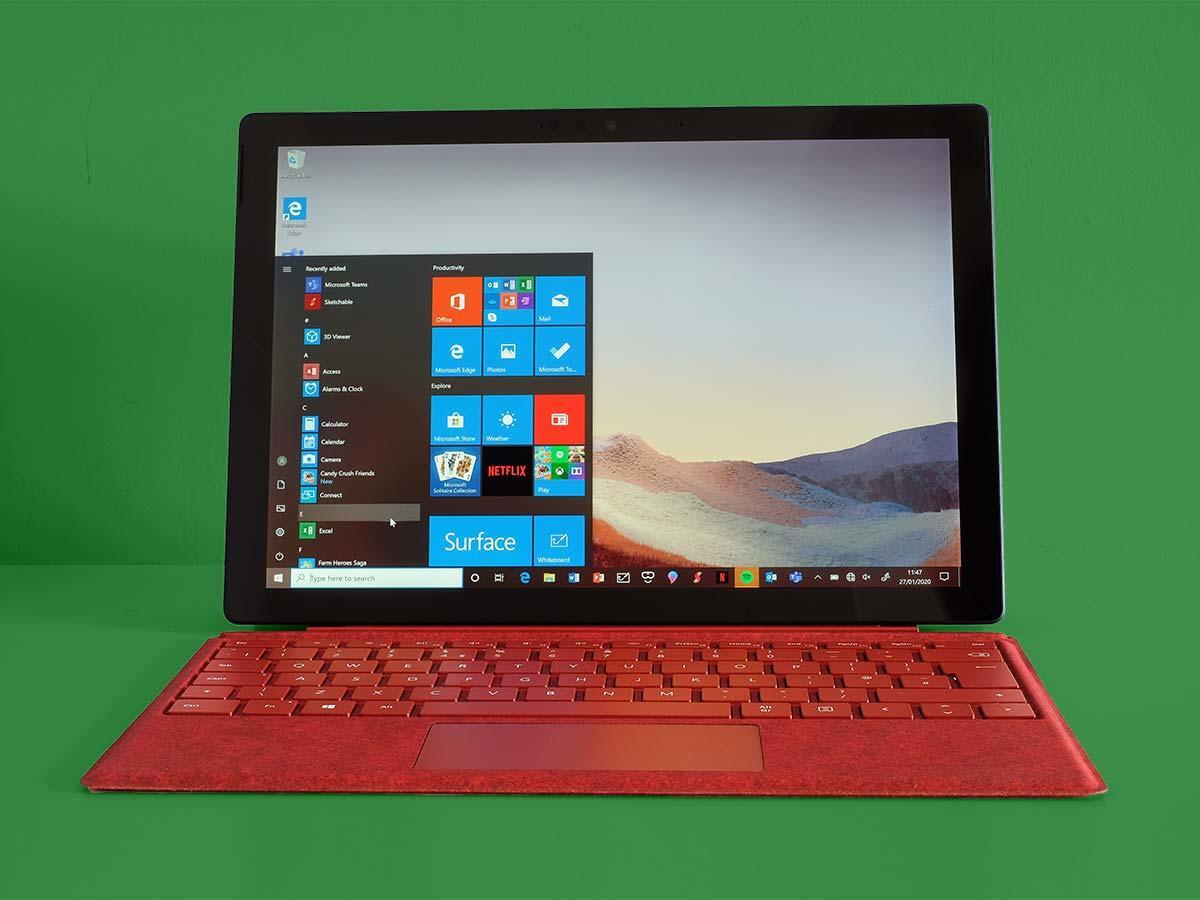 The Surface Pro 7 is one attractive piece of tech, inside and out. There’s still a lot we want to see, from the battery life (which Microsoft says’ll last up to 10 hours) to audio quality and the various peripherals like the Surface Pen (which we’re hoping will become available). But if you can afford the R18,000 and upwards price of entry, are keen on some ultraportable Windows 10 Home that won’t lag when you swap tasks or are just generally a fan of quality hardware, the Surface Pro 7 is a great place to look. The Surface Pro 7 launches in SA from 29 July this year. Keep your eyes open for a full review soon.
The Surface Pro 7 is one attractive piece of tech, inside and out. There’s still a lot we want to see, from the battery life (which Microsoft says’ll last up to 10 hours) to audio quality and the various peripherals like the Surface Pen (which we’re hoping will become available). But if you can afford the R18,000 and upwards price of entry, are keen on some ultraportable Windows 10 Home that won’t lag when you swap tasks or are just generally a fan of quality hardware, the Surface Pro 7 is a great place to look. The Surface Pro 7 launches in SA from 29 July this year. Keep your eyes open for a full review soon.

